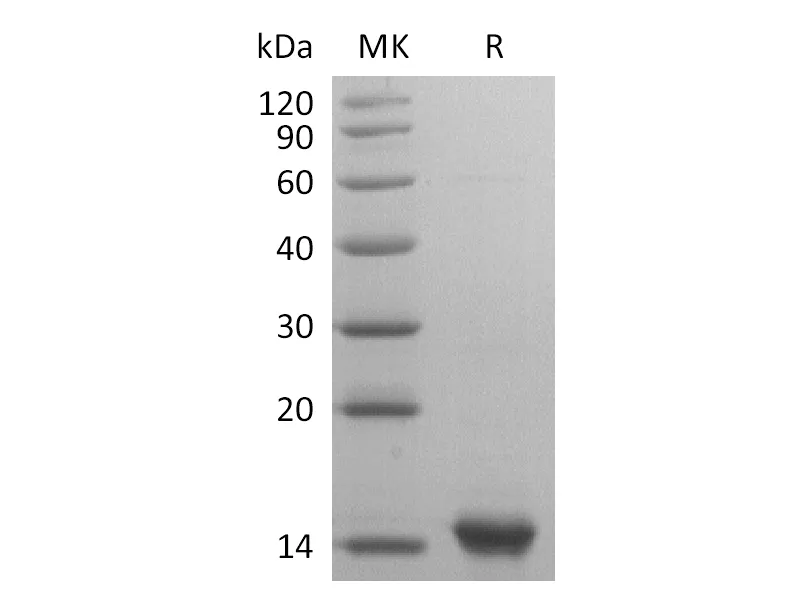
Size2:50μg price2:$465
Size3:500μg price3:$2325
| Name | Recombinant Human IL-31 |
| Purity | Greater than 95% as determined by reducing SDS-PAGE |
| Endotoxin level | <0.01 EU/µg as determined by LAL test. |
| Construction | Recombinant Human Interleukin-31 is produced by our E.coli expression system and the target gene encoding Ser24-Thr164 is expressed. |
| Accession # | Q6EBC2 |
| Host | E.coli |
| Species | Human |
| Predicted Molecular Mass | 15.8 KDa |
| Buffer | Lyophilized from a 0.2 μm filtered solution of PBS, pH 7.4. |
| Form | Lyophilized |
| Shipping | The product is shipped at ambient temperature.Upon receipt, store it immediately at the temperature listed below. |
| Stability&Storage | Lyophilized protein should be stored at ≤ -20°C, stable for one year after receipt. Reconstituted protein solution can be stored at 2-8°C for 2-7 days. Aliquots of reconstituted samples are stable at ≤ -20°C for 3 months. |
| Reconstitution | Always centrifuge tubes before opening.Do not mix by vortex or pipetting.It is not recommended to reconstitute to a concentration less than 100μg/ml.Dissolve the lyophilized protein in distilled water.Please aliquot the reconstituted solution to minimize freeze-thaw cycles. |
Alternative Names
Interleukin-31; IL-31; IL31
Background
Human Interleukin 31 (IL-31) is a cytokine containing a four-helix bundle structure. It shares several structural and functional characteristics with IL-6, Oncostatin M, LIF, and Cardiotrophin-1. Human IL-31 cDNA encodes a 164 amino acid precursor that contains a 23 amino acid signal peptide and a 141 amino acid mature protein. Human and mouse IL-31 share 24% sequence identity in the mature region. IL-31 is mainly associated with activated T cells and is preferentially expressed by type 2 helper T cells (Th2). IL-31 signals via a heterodimeric receptor complex composed of a gp130 related molecule termed IL-31RA (also GPL and GLMR) and an Oncostatin M receptor (OSM Rβ). The IL-31 receptor is constitutively expressed by keratinocytes and upregulated by IFNγ on monocytes. GPL/OSMR signaling is a strong activator of STAT3 and STAT5, and can also activate STAT1, Jak1, and Jak2 signaling pathways. IL-31 regulated immune responses have been implicated in skin physiology and inflammatory skin diseases. Studies have shown that IL31 induces severe pruritis (itching) and dermatitis in transgenic mice.
Note
For Research Use Only , Not for Diagnostic Use.
